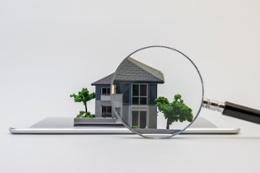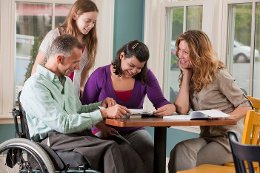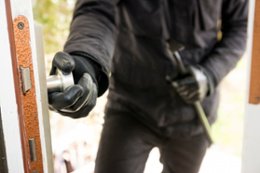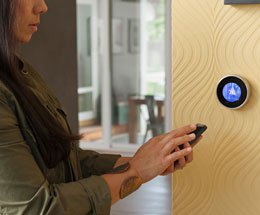
by Flagship Staff | Aug 7, 2018 | Blog
If you’re like me, you carried around paint samples and fabric swatches for weeks before finally settling on the choices. Now that my room is coming together, I’m still in love with the color scheme I chose.
But with the heat of summer here and sunlight streaming through my windows, it’s clear I need to think about protecting those colors from diminishing. Over time, the sun’s rays can “age” your room, making things fade and discolor. It’s not just ultraviolet (UV) radiation that causes damage to furniture, rugs, paint and artwork. Visible light, heating, humidity, the age of the fabric, and fabric dyes all play a part in the process, with UV radiation attributed to 40 percent of the damage.
While you can smear on sunblock to protect your skin from UV rays, it takes a few different tricks to protect your home. These tips will help keep your décor’s vibrant colors looking fresh.
Rearrange Your Furniture Often
Keeping your furniture continually in one spot will only emphasize damage and create dark spots on your floor. Try these tricks instead.
Float furniture away from windows and out of direct sunlight. In addition to keeping the pieces outside of harmful rays, floating furniture creates interesting designs with great conversation areas and often makes rooms look larger than if the items were pushed against the walls.
Rearranging furniture won’t necessarily keep it out of the light, but it will distribute the fade evenly so that it’s less visible.
Swap photos or artwork. Instead of hanging valuable art or prized photos where the sun can cause damage, switch them to walls that stay out of the sun. Use sunny spots for mirrors, metal décor, fun signs, decorative plates and other more fade-resistant items.
Choose Décor with Sunlight in Mind
The only thing better than having beautiful windows in a room is even more windows. If you have a wall of windows in your home, you need to consider the excess sunlight when you make choices in furniture and décor.
Pay attention to fabric choices. There are “outdoor” fabrics with through-and-through color designed for indoor use. They are more fade-resistant because the color is part of the production process rather than a dye that’s added later.
Bright colors, such as red, tend to appear faded faster. Choose more neutral colors to reduce the appearance of fading. Use bright colors in easily replaced fabric items, such as accent pillows or throws.
Slipcovers can be an asset in a light-filled room. They’re easy to wash and inexpensive to replace—which makes them great for homes with kids and pets as well.
Select Window Shades That Save Your Design
Choosing the right window treatments makes your room’s overall design complete. There are style and color options to suit every room design and offer protection for your investment.
Don’t give up your view. Keep your view to the outdoors with clear cling panels that block UV light and glare. Or, maximize the tilt-wand feature on blinds to direct sunlight away from furniture without closing off the view.
Don’t skip natural light. While blackout shades are great for bedrooms, there are plenty of sheer window treatment options for your main living areas. Consider woven or bamboo window blinds, or even cellular shades, which allow for natural light while still blocking damaging rays.
Don’t work too hard. Today’s motorized shades make it easy to block the afternoon’s damaging light. One click of the remote can close and open light filtering shades on a whole wall of windows.
Don’t forget window treatments for skylights. A light-filtering shade helps block harmful rays from skylights without making the room darker. Choose a motorized version with remote control to make it easy to open and close.
Practice Maintenance for Preservation
A few tips added into your regular cleaning routine can help keep your room as fresh as possible.
Flip furniture cushions whenever you clean so they are continually rotated. This way, one side does not become lighter than the other.
Turn your throw rugs in a different direction. Not only will it help them avoid fading in one area, but you’ll also protect against traffic wear.
Don’t just dust. Furniture dries out in the sunlight, so make sure to use furniture polish and leather conditioner as recommended by the manufacturer.

by Flagship Staff | Jul 31, 2018 | Blog
Surprises are great — but not when you’re closing on your new home. Even if a house passes a pre-close inspection, environmental hazards like mold, asbestos, radon, and lead may still be lurking. According to 2013 data from the Environmental Protection Agency and the Department of Housing and Urban Development, more than 30 million American homes pose “significant” health issues.
The good news: For the most part, those issues are easy to detect and, with professional intervention, easy to remedy. The bad news: A standard home inspection doesn’t include tests for environmental factors like air quality, and these kinds of tests — and their fixes — can be expensive.
That’s why experts suggest making your offer contingent on environmental test results. The presence of certain hazards doesn’t necessarily mean you have to pass on a property you really love; if the current owners are willing to pay experts to get rid of the problem, you and your family can move ahead without worry. If they aren’t, that’s their problem — anything that worries you could scare off other potential buyers, too.
Here are four health hazards to look out for when you’re closing on a home, plus what to do if you encounter an issue.
1. Mold
Yes, it looks gross, but a little bit of mold often isn’t usually anything to panic over, especially if it’s contained to one small area of the home. On a large scale, however, mold can cause unpleasant, allergy-like symptoms and even trigger asthma attacks. Young children, seniors, and people with heart and lung disease are particularly susceptible to mold’s effects.
Sellers may or may not have to disclose mold-related issues, depending on state laws. But you (or a home inspector) can still assess mold risk by asking the current owners about any flooding, burst pipes, or leaks they’ve dealt with in the past.
The presence of mold shouldn’t necessarily be a deal breaker. You can easily DIY mold remediation of a small area. If the growth is more widespread, call in the pros.
2. Lead
If you’re buying a home that was built before 1978, it probably contains lead paint. Fortunately, if the property’s painted surfaces are in good condition, it may be okay. Lead paint becomes problematic when it’s cracked or peeling, and can be especially harmful to young children and pregnant women.
Sellers are legally required to disclose the presence of lead in a home and share results if they’ve had levels tested. If they haven’t, buyers are, by law, given 10 days during which they can bring in their own inspectors.
If lead is a concern for your family, leave the remediation to certified professionals who meet EPA standards.
3. Asbestos
Similar to lead, asbestos was prevalent in homes built before 1975. It can be found in all kinds of surfaces and materials, from pipe insulation to siding to linoleum. Long-term exposure to asbestos can cause lung disease and cancer; however, just like lead paint, asbestos-filled products may not be cause for concern if they’re in good condition. In fact, if they are in good condition, it’s better to not disturb anything. Attempts to remove it will probably send highly-toxic asbestos particles into the atmosphere.
If you’re worried about asbestos, see if the seller will permit testing by an industrial hygiene firm. (Never test for asbestos yourself.) If it is present and poses a hazard, get estimates for professional removal from an asbestos abatement contractor. Fixing the problem won’t take long, but whoever handles it should be properly licensed.
4. Radon
Exposure to radon, a radioactive gas produced by the breakdown of uranium in soil, can pose a serious health risk. In fact, it’s the second-leading cause of lung cancer in the U.S., after smoking. Radon can enter your home through cracks in the doors, windows, and foundation, and isn’t just an issue for older homes — newer constructions can have hazardous radon levels, too. In fact, the EPA estimates that almost one out of every 15 homes has elevated radon levels.
Experts suggest testing your home for radon twice a year. If the sellers haven’t tested for radon recently, insist that they reduce the home price to cover radon testing and, if levels are unsafe, remediation. You won’t need to hire a separate home inspection firm to conduct a radon test, although it may be an additional charge. If radon is present, don’t assume that means you have to retract your offer; radon removal pros are easy to find and relatively inexpensive.
The upshot: Know what tests to ask for and don’t be afraid to ask for them. Your dream home isn’t the only thing at stake — your family’s health is, too.

by Flagship Staff | Jul 24, 2018 | Blog
There is a lot we can do to ensure our family’s health and safety. In our daily lives, we can encourage healthy habits and identify potential safety hazards to avoid. Looking toward the future, we can seek home, vehicle, and life insurance in case of an emergency. While there are so many situations we can — and do — prepare for, there are plenty we overlook. A sudden disability, for example, is an occurrence that families rarely plan for, and it can be emotionally and financially overwhelming. It’s important to understand all that’s involved when a family member is disabled after an accident or is diagnosed with a physical impairment.
Like any new lifestyle change, a person’s recently-acquired disability will require time to adjust, not only for themselves but for their family members, as well. While this can be a time of great emotional struggle, for many families it can also prove to be a bonding experience that strengthens family relationships. Depending on the disability, a family may need to adjust to a new schedule with medical appointments, new mobility equipment throughout the home, and/or the long-term care needs of their relative.
These new changes will not only be time-consuming, but they can be financially draining, as well. Take, for example, a person who has lost the ability to walk and is confined to a wheelchair. This person requires certain home modifications and mobility throughout the home to give a wheelchair full access, like wider hallways, larger bathrooms, and lowered countertops. A child diagnosed with a birth injury, like Erb’s palsy, might require more inclusive fixtures to better accommodate limited mobility in the arm or hand. Examples include rocker light switches, lamps with touch sensors, and door handles, to name a few. These particular features are highly recommended for a person with limited fine motor skills.
Technology can also take on a new meaning for the disabled and their families. Apps that provide home safety features for families can be especially helpful for a person with limited mobility. With the touch of a button on their iPad, a person with home safety technology (depending on the software) can turn the lights on or off in the home, change the thermostat, lock or unlock doors, or call for emergency help if needed. These services can give more freedom and control to a person with limited mobility or a physical impairment.
As previously mentioned, these home modifications can add up. To preserve some of the family’s savings and aid in the costs associated with a home renovation project, there are several financial avenues available to explore.
In some circumstances, a family may be able to take legal action against the party that caused the permanent disability. We often don’t think of this as viable option while adjusting to a new situation, but for many people, these lawsuit settlements can provide a great deal of financial support for both home modifications and other needs that might arise in the future. A family whose child suffered a birth injury due to medical malpractice might consider seeking legal action on behalf of their child. For example, families may file a cerebral palsy lawsuit to combat the exponential costs of long-term care.
For those in which legal action isn’t an option, there are also several great loan options that are specific to home improvements. First, there is the FHA Title 1 loan provided by the Federal Housing Administration (FHA). The FHA is not the lender (you have to go to a private FHA-approved lender), but it does ensure the loan making it less risky for lenders and easier to obtain for borrowers. An FHA Title 1 loan can be used for a broad number of home improvements to make a home more functional and livable which is perfect for someone who needs disability-based modifications in their home.
Second, a Section 203(k) loan is another FHA-backed loan that many homeowners use for broader home improvements. Again, these loans can be easier to obtain because they are insured by the FHA. The standard 203(k) has no price cap or a higher maximum depending on the state, which can make it a better option for larger home improvement projects. It is important to remember that these two solutions are loans; a steady income and some savings may be required to cover the payments. If you already have significant debt accumulated, these might not be the most viable options for you or your family.
For those who are struggling financially with a disability, but are unable to obtain a loan, consider seeking out your local advocacy group. Organizations like the National Council on Independent Living often have a part of their budget set aside to assist with home modifications or other costly needs. To find your local Center for Independent Living, call 703-525-3406 today.
Living with a disability or adjusting to a family member’s disability can be difficult, but it shouldn’t leave you with a financial hardship. There are products and resources available to help you carry the financial burden, make life easier, and renovate a home to be more inclusive for the whole family.

by Flagship Staff | Jul 18, 2018 | Blog
For many families, summer vacations are the highlight of their year. Hectic schedules are put aside for rest, relaxation, and quality family time. No matter where you go this summer, family memories will be made that will last a lifetime.
A bad vacation memory is coming home to a burglarized home or vehicle. Since people are more active during the summer, our homes stand empty more frequently. In addition, many people take strolls or bike rides around the neighborhood and leave doors and windows open. Both scenarios make the home easy targets for burglars.
Here are some tips to keep your home safe while you’re on vacation.
1. Buy a professionally-installed home monitoring system. Professionally-installed systems, such as ADT, offer many options for keeping your home safe. They provide this equipment for their customers.
Security keypad – Central command for your home security system.
Motion detector – They cover a large area of your home and can send you alerts and video clips if motion is detected while your system is armed. If you have, pets don’t worry. The sensitivity level can be adjusted based on the size of your pet.
Entry detection – These sensors monitor your doors and windows. If a door or window is opened when your system is armed, you’ll receive a text alert. If you have small children, another nice feature is setting the door to chime every time they go in or out to play. I absolutely loved this feature when my kids were small.
Glass break sensors – These sensors detect the sound of breaking glass.
Don’t forget, ADT and others provide monitoring 24/7 and 365 days a year. Therefore, you may be eligible for an insurance discount. Talk to your independent insurance agent to learn more.
2. Install a DIY security system. Nest secure is an easy way to protect your home by doing the installation yourself. Components include:
Nest Guard – Alarm, keypad, motion sensor, and the brains in charge of the entire system.
Nest Detect – A sensor that monitors doors, windows, and rooms.
Nest Tag – The easiest way to arm and disarm the system without entering a passcode.
Nest App – Keep tabs on your house from anywhere in the world.
If someone breaks into your home, you’ll receive a text to call the police. If you want to add an extra layer of security, you can team up with Brinks Home Security. Brinks provides professional monitoring 24/7, 365 days a year.
3. Develop a plan with your neighbors. Let your neighbors know when you’ll be gone so they can keep an eye on your house. They may also be able to cut your grass or water your plants while you’re gone.
4. Light up the night. Install motion-activated outdoor lighting. If all the entry points to your home are illuminated, it’s likely they’ll move on to the next house.
5. Keep valuables and important documents locked. Don’t leave valuable jewelry or paperwork laying around. Store them in a fireproof lock box or safe. It may be wise to store important documents, such as wills, passports, and birth certificates, at a relative’s house.
6. Keep your house looking normal. When you leave home, make sure it looks like you still live there. Leave your blinds and curtains open. Install smart plugs to turn lights on and off on a schedule. The nice thing about smart plugs is you can change the schedule while you’re traveling.
7. Park in the garage. Cars parked in the driveway are not much safer than cars parked in the street. Car thefts can take place in less than 20 seconds. Always lock your belongings in your glovebox or trunk. It’s also wise to remove your garage door opener from the car.
8. Remove stashed keys. Storing spare keys under the doormat or rock isn’t the smartest thing to do. A lockbox or smart door lock is safer.
9. Halt mail and newspaper delivery. Newspapers and mail falling out of your box into the street is a telltale sign nobody’s home. Talk to the U.S. Postal Service about holding your mail while you’re gone.
10. Avoid social media. Don’t blast your travel plans on social sites before you go and during your trip. Post pictures when you return.
Insurance coverage
Depending on your insurance policy, coverage may be provided. Coverages that may help if your home is burglarized are Dwelling Coverage and Personal Property Coverage.
Dwelling Coverage provides protection by paying for repairs needed after a break in. Some examples include repairs for a broken window or door.
Personal Property Coverage provides protection by repairing or replacing your stolen personal property. For example, if an intruder steals your large screen TV and gaming console, your insurance policy would pay for replacements of like kind and quality.
If you have a home monitoring/detection system that sends you an alert when someone breaks into your home, you may be eligible for a discount on a West Bend Home and Highway® insurance policy. To learn more, contact your independent West Bend agent or find an agent near you by visiting www.thesilverlining.com.

by Flagship Staff | Jul 10, 2018 | Blog
While summer is a great time to enjoy many outdoor activities, it can take a toll on our pocket books because of increased utility costs. Air conditioning units and dehumidifiers are working overtime to keep our homes comfortable. With the kids home from school, electronic devices are used more often, and family vacations can lead to more laundry.
Here are some tips to reduce your utility bills this summer.
1.Don’t forget to program your thermostat. During the winter, I program the thermostat to turn down during the day. In the summer, I don’t adjust the settings. Depending on your kids and pets, it may make more sense to leave the settings alone. It may help to know, however, that for every degree above 72, you can reduce your expenses by as much as 3%.
2.Use fans to keep cool. Depending on your floor plan, fans can be a great way to help cool things down in your home. Since I live in a two story, our second floor is always warmer. At bedtime, I increase the temperature on the air conditioner and rely on our ceiling fans to keep cool. Portable and ceiling fans are inexpensive ways to keep air moving in your home.
3.Change or clean your furnace filter regularly. A dirty filter will restrict airflow, which causes your furnace to work harder. A furnace that works overtime will increase your utility bill. Most filter manufacturers recommend changing your filter every three months. If you have pets in your home, you may need to do it more frequently.
4.Replace your lightbulbs. Production of 40- and 60-watt incandescent light bulbs ceased January 1, 2014. While you may still be able to find them, consider replacing old incandescent bulbs with LEDS or other more efficient bulbs to help reduce your electric bill. And don’t forget to turn off your lights when you leave the room. To learn more about lightbulbs, check out my blog, “Can you see what’s going on in your house?”
5.Unplug unused electronic devices. Many electronic devices (e.g., TVs, gaming consoles, computers, and DVD players) are plugged in all the time in today’s homes. If these devices aren’t used regularly, consider unplugging them. Even when not in use, they use electricity and generate heat. Definitely unplug them if you’re going on vacation for an extended period.
6.Wash in cold. If you do more laundry during the summer, consider washing your clothes in cold water instead of warm or hot. If you use more cold water, your water heater will run less.
7.Enjoy dinner on your patio or deck. Enjoy a nice family dinner outside. This will reduce the need to turn on lights or the TV for entertainment. Instead, make family conversation your entertainment.
8.Good ole fresh air. If your city doesn’t have an ordinance against clotheslines, hang your laundry out to dry.
9.Buy a rain barrel. Rain barrels are becoming popular and can be purchased at many of the big box retailers. This is a great way to collect rainwater for watering your plants or garden. In addition, consider redirecting your gutter system to low-lying gardens or landscape beds.
10.Fire up the grill. I enjoy grilling out year round, especially on hot days. By not using the oven, you can prevent the indoor temperature from rising. Be sure to stay hydrated while you’re outside.
11.Open the windows in the evening. If the temperature cools off in the evening, turn off your air conditioner and open your windows.





